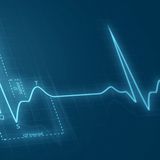


How insulin works
Insulin is produced by special cells called pancreatic islets (or islets of Langerhans), which exist as small, isolated clumps of cells within the pancreas. The islets of Langerhans also produce glucagon, another hormone which affects blood glucose levels. Both insulin and glucagon are secreted directly into your bloodstream, and work together to regulate the sugar (glucose) levels in your body. Glucagon is produced by the alpha cells of the pancreatic islets. It is released when your blood sugar levels are low (for example, if you have been fasting or exercising) stimulating the release of glucose from your body stores. As a result, stored glycogen in the liver is broken down to glucose and enters the bloodstream.Insulin, on the other hand, is produced by the beta cells of the pancreatic islets. It is released when you have just eaten a meal and the level of glucose in your bloodstream is high. Insulin works by stimulating the cells within your body to take up the glucose in your blood, either for immediate energy or for storing as glycogen in your liver and muscle cells.


